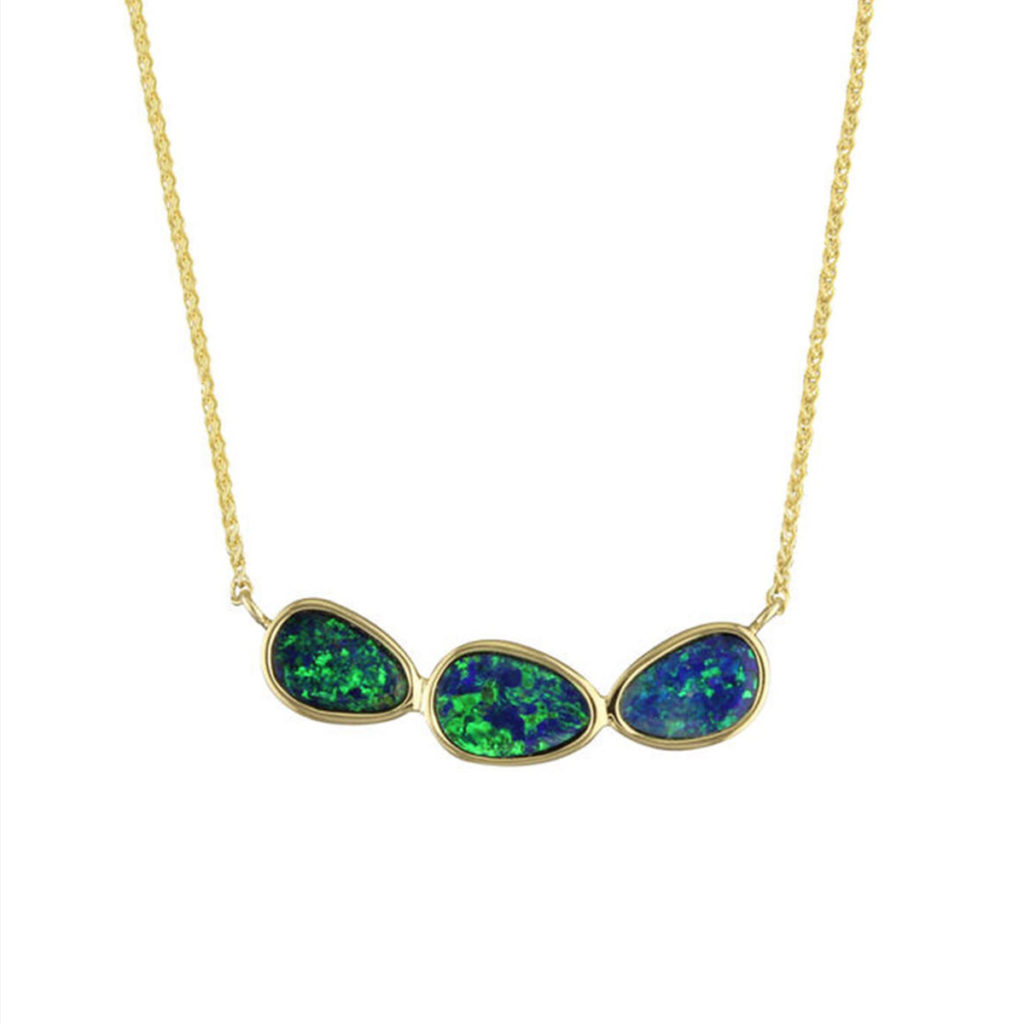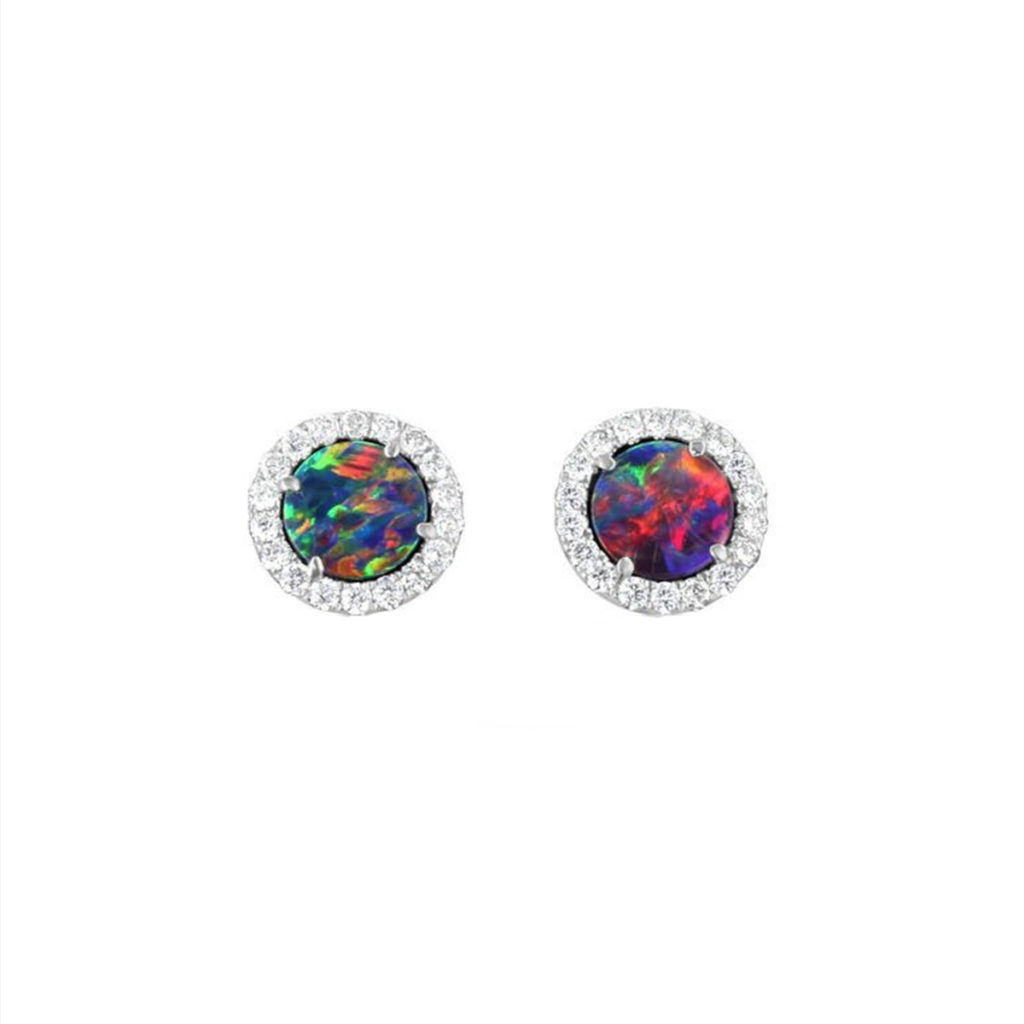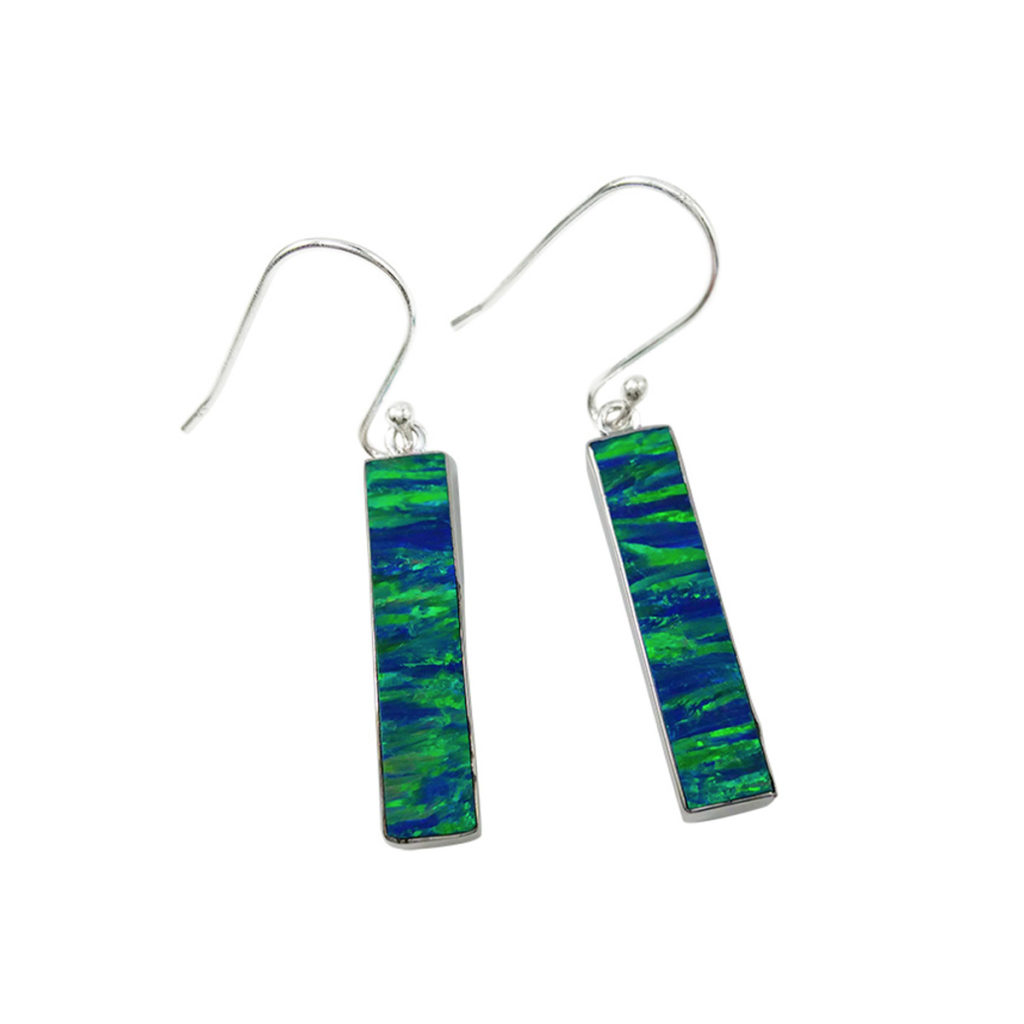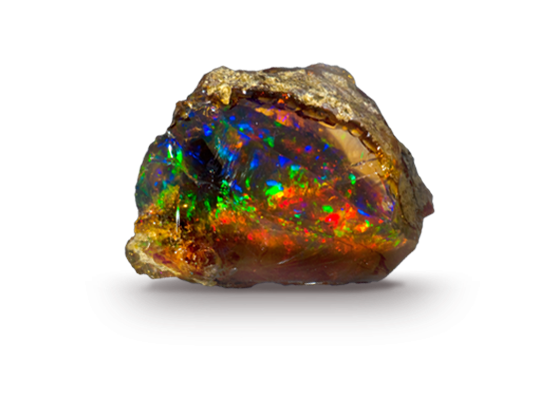
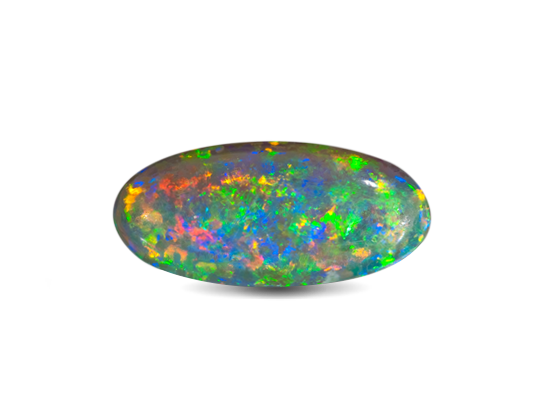
It’s October and we’re excited to share about one of our favorite gemstones, opals. Often referred to as “The Queen of Gems” because of its kaleidoscopic play of colors. Play-of-color refers to the occurrence of sub-microscopic spheres that light waves travel between, ultimately displaying the rainbow. The color you see is dependent on the size of the spheres.
This gemstone is unlike any other with its unique display of rainbow colors and experts have divided the gem into five different categories:
- Black opal: Translucent to opaque, with play-of-color against a black or other dark background.
- Fire opal: Transparent to translucent, with brown, yellow, orange, or red bodycolor. This material—which often doesn’t show play-of-color—is also known as “Mexican opal.”
- Boulder opal: Translucent to opaque, with play-of-color against a light to dark background. Fragments of the surrounding rock, called matrix, become part of the finished gem.
- Crystal or water opal: Transparent to semitransparent, with a clear background. This type shows exceptional play-of-color.
- White/light opal: Translucent to semi translucent, with play-of-color against a white or light gray background color, called bodycolor.
Opal is found most commonly in Australia but deposits have also been found in, Ethiopia, Mexico and Brazil are also important sources. Additional deposits have been found in Central Europe, Honduras, Indonesia, Madagascar, Peru, Turkey and the United States.
Opal History
In 75 AD, Roman scholars marveled that the gem encompassed the red of ruby, the green of emerald, the yellow of topaz, the blue of sapphire, and the purple of amethyst.
Many cultures have given this beautiful gemstone powers and origins. For instance, Arabic legends say the stone falls from the heaves in flashes of lightening. Ancient Greeks believed opals guarded from disease. Europeans give the stone symbolic meaning, hope, purity and truth.
Facts
- Made up of 20% water
- 5 to 6.5 on the MOHS Hardness Scale
- October birthstone
Opals Care & Cleaning
The safest way to clean this October birthstone is with warm soapy water. Other cleaning methods could damage the store. We’d advise not soaking the stone or wearing it in the water, prolonged exposure can weaken the stone. High heat and sudden temperature changes have been known to fracture opals.
Shop Opals at Josephs
